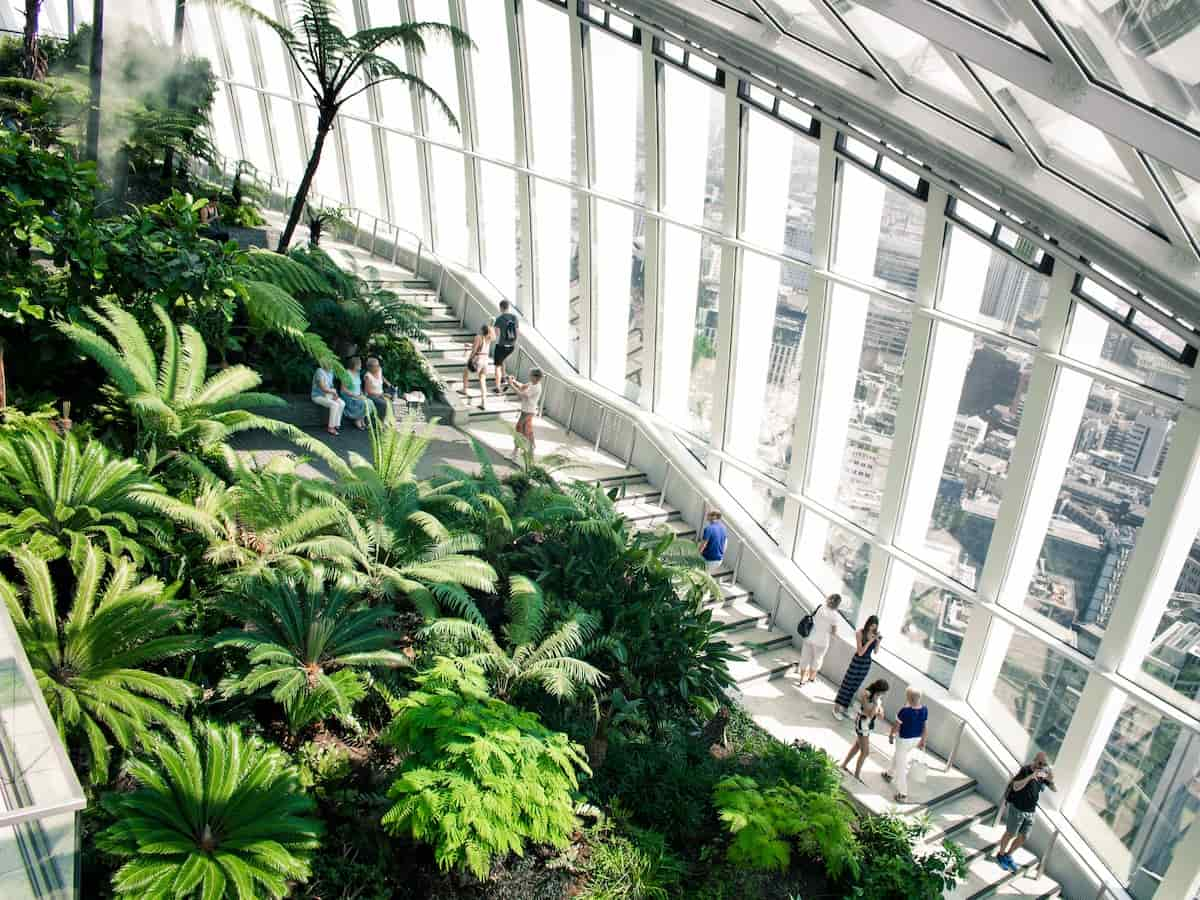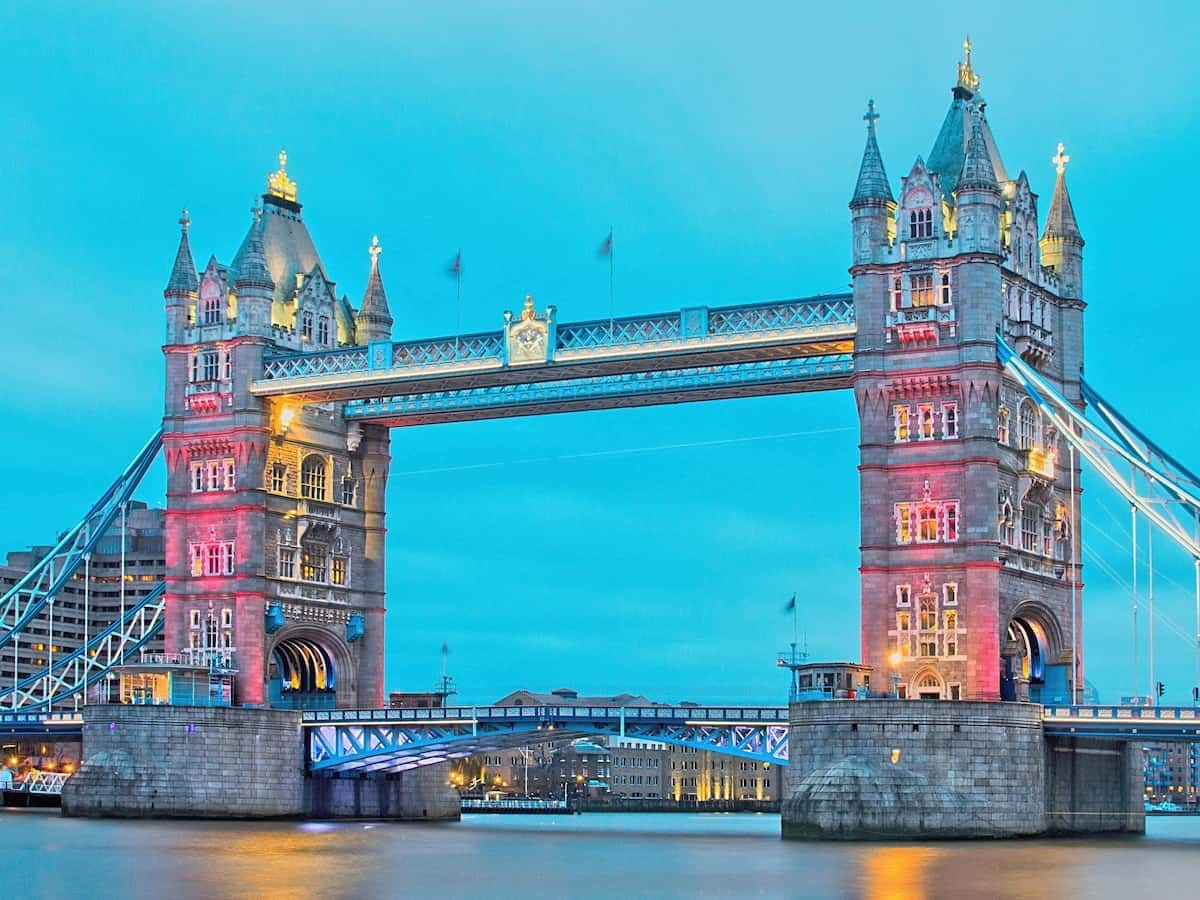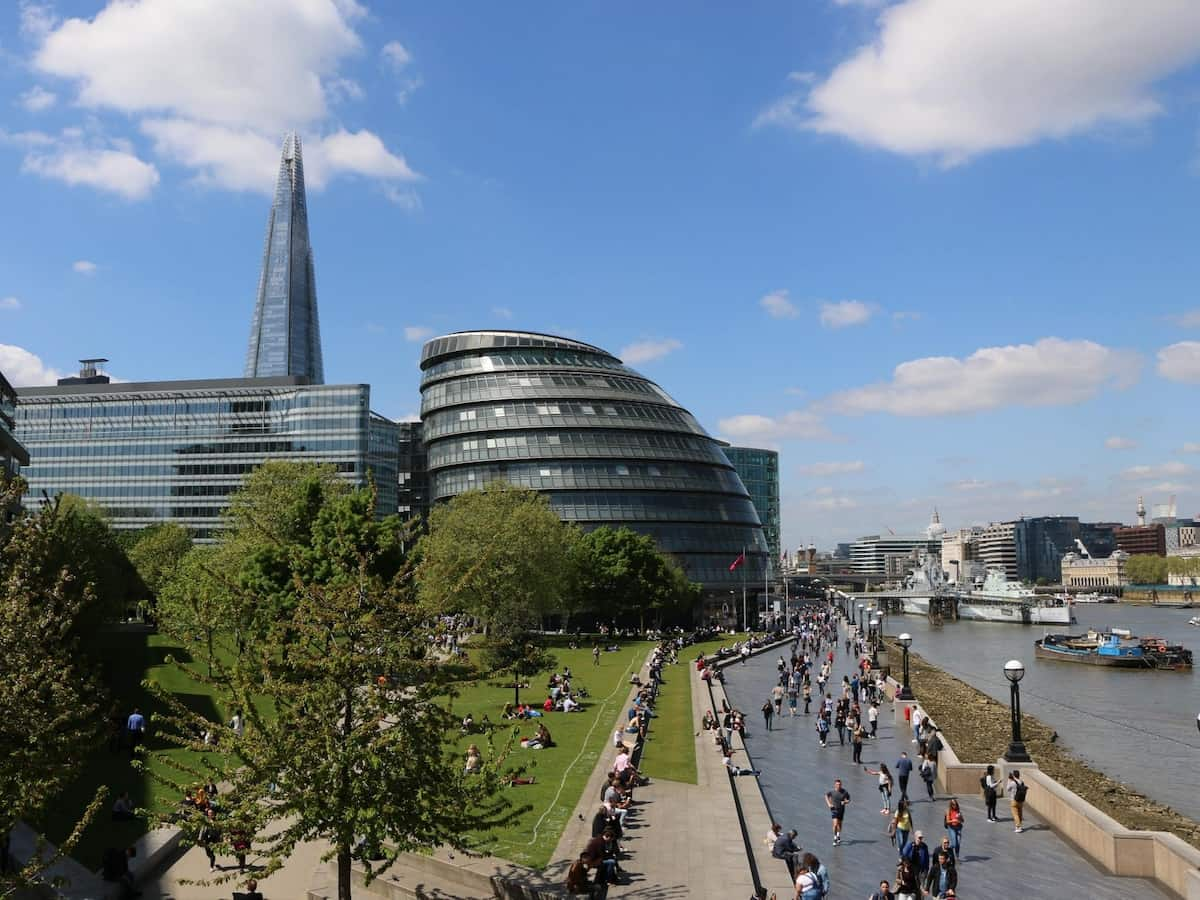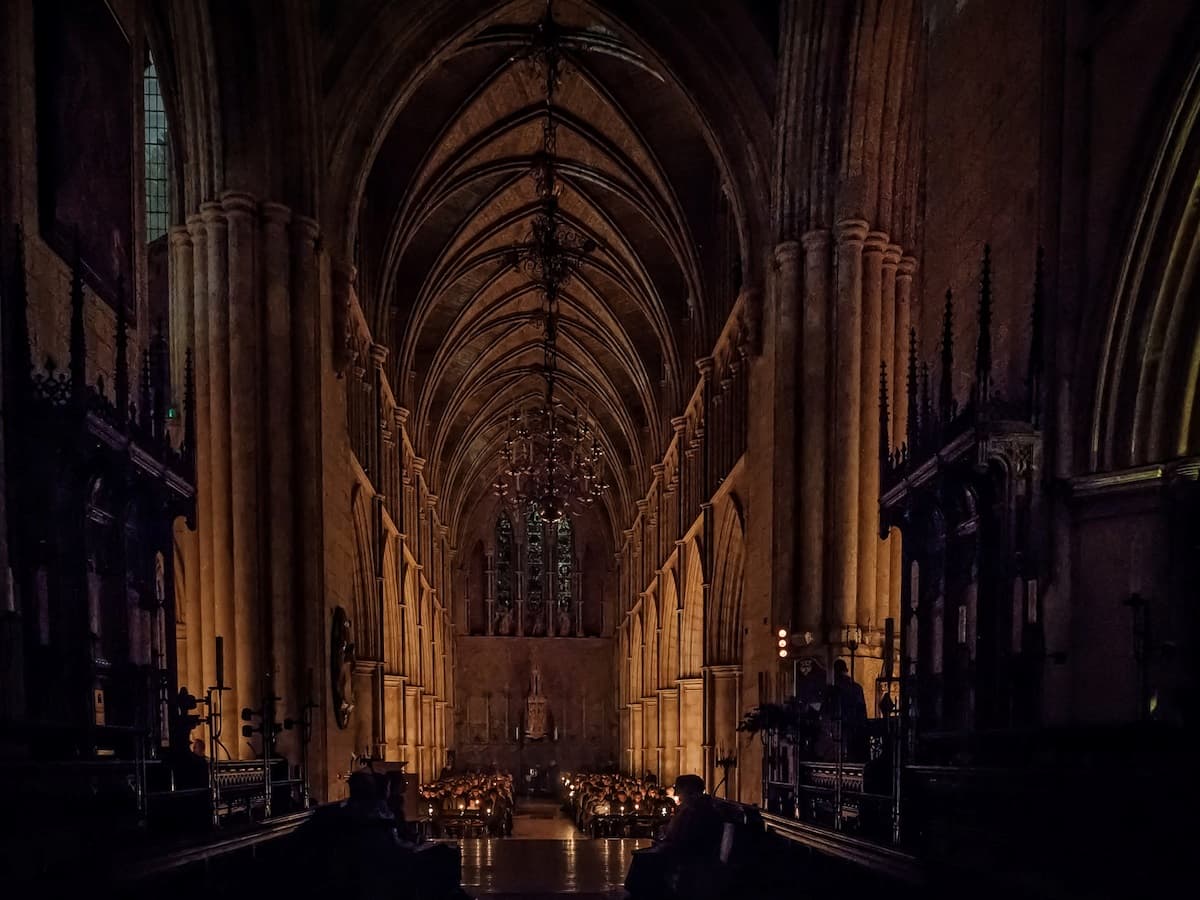This one-day itinerary hits 16 different points of interest over 4-5 miles meandering through some of the oldest parts of London. There are three main stops: St. Paul’s Cathedral (skip the Line and book ahead with this link), the Tower of London (skip the line and book ahead here), and the Tate Modern (free booking link here). Along the way, you’ll see ancient Roman ruins, visit a free 300-foot tower, and walk across Tower Bridge. In between, you’ll pass by some incredible picture spots most people miss.
Stop 1: Millennium Bridge
We suggest starting your early day by crossing Millennium Bridge, which has a great view approaching St. Paul’s, your second stop. If you are coming from another direction, don’t feel compelled, but if you have extra time or are coming from South Bank (a great place to stay), it’s a neat experience.

(image via Johan Mouchet)
Stop 2: St. Paul’s Cathedral
This breathtakingly large Christopher Wren masterpiece opens at 8:30. It’s worth both experiencing from the inside and from the top. By getting here early you’ll leave time to explore the whole day and get to see St. Paul’s with fewer people in it, which is always better. You can skip the line by booking a ticket in advance.

(image via Nick Fewings)
Stop 3: One New Change
From there you’ll take a shortcut through One New Change, a modern shopping plaza. The main point here is the view back to St. Paul’s, but you can also catch a bite if you’d like. There will be other opportunities to snack at Leadenhall Market in 30-45 minutes, so don’t feel like you have to. Before seeing the market, however, we recommend you make two quick stops.

(image via Nick Fewings)
Stop 4: London Mithraeum
First, visit the London Mithraeum, to see Roman ruins dating back to 200 AD, located in the Bloomberg complex of all places. It just takes a few minutes to check out, and it’s free, but we recommend booking a time in advance here.

(image via Steve Powter)
Stop 5: St. Stephen Walbrook
Just North of the Mithraeum is the beautiful St. Stephen Walbrook church. Also a Wren design, this church served as an architectural prototype for St. Paul’s and later saved lives as a shelter during WWII. Like the Mithraeum, it won’t take long, but it gets even higher reviews than its larger, busier sibling.

(image via St Stephen Walbrook)
Stop 6: Leadenhall Market
If you are hungry now, you are in luck, as Leadenhall Market, a glorious Victorian-styled covered market, is close by.

(image via Claudia Owczarek)
Stop 7: Sky Garden
You can also grab a bite at Sky Garden, which is worth stopping by even if you are full for the 500-foot-high views of the city. Unlike other high viewing floors, Sky Garden is free, but you can book a free ticket here to make sure it’s open for you.

(image via Hello Lightbulb)
Stop 8: St. Dunstan-in-the-East Church Garden
From this glassy, modern tower you’ll descend, and walk a few minutes South to St. Dunstan in the East, which dates back to 1100. The church was severely damaged in the Great Fire of 1666, only to have a steeple put on it by (you guessed it) Christopher Wren. It was later nearly destroyed in the Blitz but got turned into a public park in the 1960s. It’s another 5 minute stop, but it will really give you a sense of what this city has seen.

(image via Kyle Bushnell)
Stop 9: Tower of London
Your next stop is the Tower of London, one of the most popular destinations for London visitors. It was started by William the Conqueror after winning the Battle of Hastings in 1066, but part of it goes back to an original Roman wall. It is extremely busy and we strongly recommend booking in advance. This self-guided booking includes an audio guide and allows you to skip the line when you arrive. Guided tours with your own private Beefeater are also available; this tour also allows for early entrance before the general admission.

(image via Nick Fewings)
Stop 10: The Dickens Inn
If you’d prefer to come back to the Tower later, but are in the mood for a pint, the nearby Dickens Inn, a traditional (and 300-year-old) pub with multiple decks and outdoor sitting areas absolutely covered in flowers. It’s in the St Katharine Docks marina, which offers some good boat spotting if you are into that.

(image via The Dickens Inn)
Stop 11: Tower Bridge
You’ll now walk across London’s most famous landmark, Tower Bridge, en route to London’s South Bank.

(image via Viktor Forgacs)
Stop 12: Potters Field Park
Stop by Potters Field Park for a respite and some great views of the bridge. Walk along the lovely Queen’s Walk and past the HMS Belfast (a highly-rated stop if you are interested) and onto Southwark Cathedral.

(image via Hans Richter)
Stop 13: Southwark Cathedral
The original church here dates back to 1000 or so, but it was damaged in the Great Fire of 1212. The gothic structure and organization that came from the rebuild then (and London’s first gothic cathedral) is in many ways preserved today. It’s another quick stop if you want it to be.

(image via Southwark Cathedral)
Stop 14: Borough Market
A few minutes south of the cathedral is Borough Market, which might very well be the best food market in all of London. It (of course) dates back to the 12th century, though the food is fresh and diverse today.

(image via Beth Macdonald)
Stop 15: Shakespeare’s Globe
From there, work your way up to Shakespeare’s Globe via Bankside street along the river. There are shorter routes, but going along the river is more scenic.

(image via Shakespeare's Globe)
Stop 16: Tate Modern
With any luck, you’ll still have some time to check out the Tate Modern, a modern gallery built in the erstwhile Bankside Powerstation. Even if you don’t visit the gallery, take a few minutes and walk in to experience the Turbine Hall, a vast indoor expanse that is so large it hardly seems real. Entrance to the Tate Modern permanent collections is free (though a donation is appreciated). Some special or traveling exhibitions may require additional fees and/or timed tickets. If you are particularly interested in art or don’t have time for a quick visit now, we recommend this guided tour combining 3 museums (the Tate Modern, the National Gallery, and the National Portrait Gallery).

(image via Jansen Yang)
This post may contain affiliate links and we will receive a small commission if you make a purchase after clicking on our link. Read our Privacy Policy and Terms of Use.
